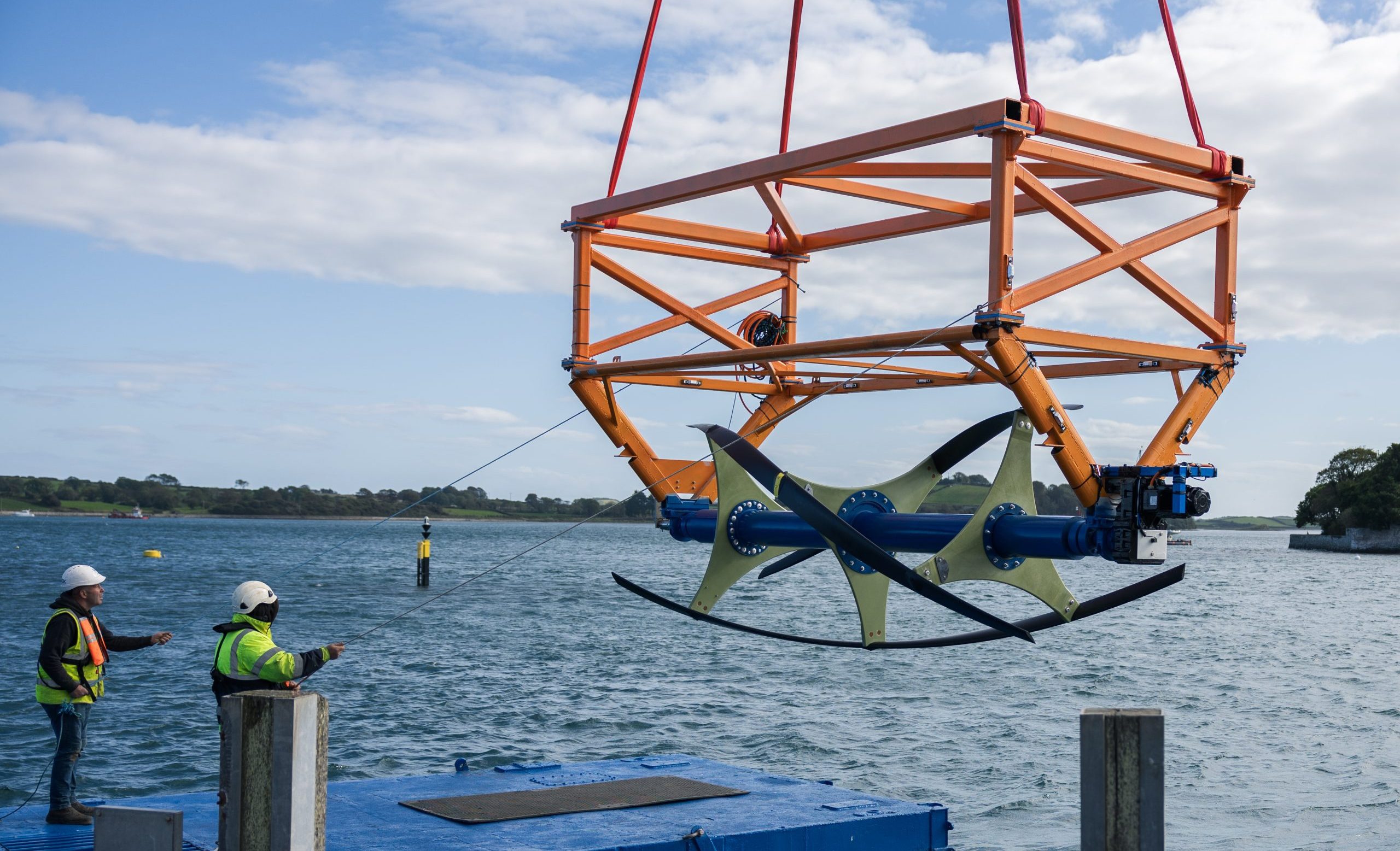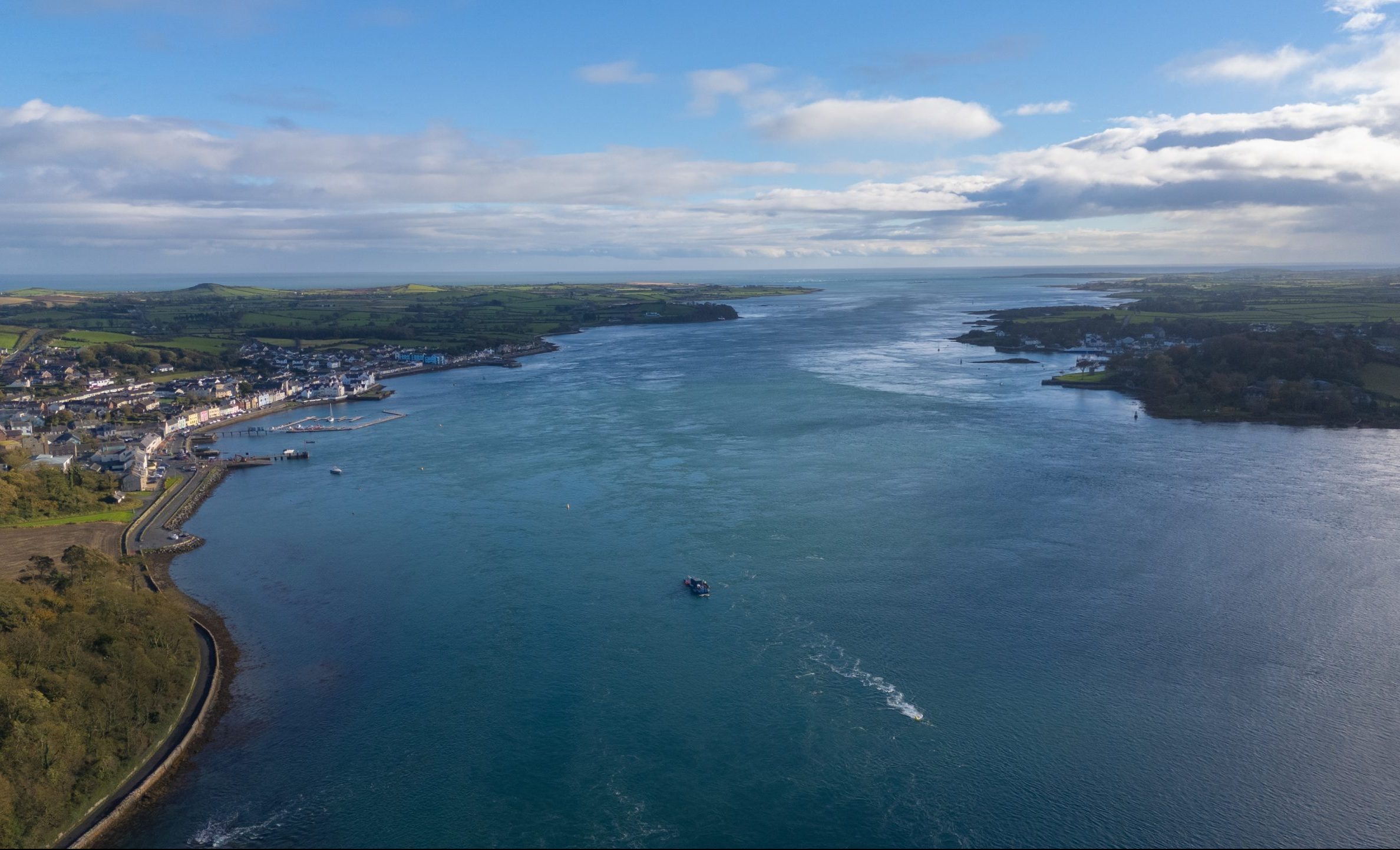ORPC Ireland and Queen’s University Belfast successfully deploy tidal device in Strangford Lough

30.10.2024
ORPC Ireland and Queen’s University Belfast have announced the successful deployment and commencement of testing of a next generation marine hydrokinetic turbine at the Strangford Lough Tidal Test Site. The project marks a significant milestone for ORPC as the first time the company has generated electricity from one of its turbines outside of North America, after seventeen previous deployments in the United States and Canada.
The deployment is part of the X-Flow project, led by Queen’s, which also includes Applied Renewables Research and Shell Technology – Marine Renewable Program as industry partners, and is supported by the Green Innovation Challenge Fund. This Fund is led by the Centre for Advanced Sustainable Energy (CASE) as delivery partner for the Department for the Economy Northern Ireland.
The purpose of this deployment in Strangford Lough is to collect data on the turbine performance in a real tidal environment, building on laboratory testing undertaken earlier this year at Consiglio Nazionale delle Ricerche’s large towing tank in Rome, Italy, during the European Commission-funded project CRIMSON. The turbine utilizes the same patented cross-flow technology to harness tidal and river currents as ORPC’s commercial RivGen® Power System.

Carwyn Frost, Senior Lecturer at QUB said: “The Queen’s Marine Laboratory (QML) Tidal Test Site in Strangford Lough is a unique facility providing developers the opportunity to deploy and monitor their technology in real tidal flows. The X-Flow project will provide unique insight on the impact of turbulent flow conditions on the control of the crossflow turbine and its blade loading. The fully instrumented turbine by ORPC will provide vital data for assessing the impact of turbulent flow conditions on performance, blade loading and control. This work will facilitate condition monitoring for predictive maintenance approaches and validation data for numerical simulations. The team at QML looks forward to delivering successful on water testing in collaboration with our industry partners.”
Patrick Cronin, Director of European Operations at ORPC Ireland said: “ORPC are bringing clean, predictable, emission-free tidal and river energy to markets around the globe, and this deployment and research is helping to maximise design efficiency and performance of our power systems. We have been delighted to collaborate with Queen’s University Belfast, the X-Flow project team, and our local supply chain partners to successfully achieve this milestone of ORPC’s first deployment in real-sea conditions in Europe. We look forward to the next stage of the project as we begin our test and operation campaign at the QML Tidal Test Site.”
Martin Doherty, CASE Director, said: “The Centre for Advanced Sustainable Energy (CASE) is delighted to support this tidal energy project in partnership with ORPC Ireland, ARR and Shell Technology – Marine Renewable Program, led by Queen’s University Belfast in Strangford Lough, Northern Ireland. X-Flow addresses industry challenges surrounding blade and rotor performance, predictive maintenance and grid-scale benefits of tidal energy. The project will contribute to reducing the levelized cost of energy, improved design tool efficiency and inform grid operators and policy makers of the system benefits of utility scale tidal energy. CASE continues to support projects such as this in marine renewables, along with others in energy systems and bio-energy. To date we have funded c.£2m of marine renewable energy research, in support of the Northern Ireland economy.”
The next phase of the project will include the testing and monitoring of the turbine through a range of operating conditions. Other work packages in the X-Flow project will focus on validating and enhancing numerical models of tidal energy turbines using the data collected from this deployment in Strangford Lough, and a study of the benefits that tidal energy can provide to Northern Ireland’s electricity system.
